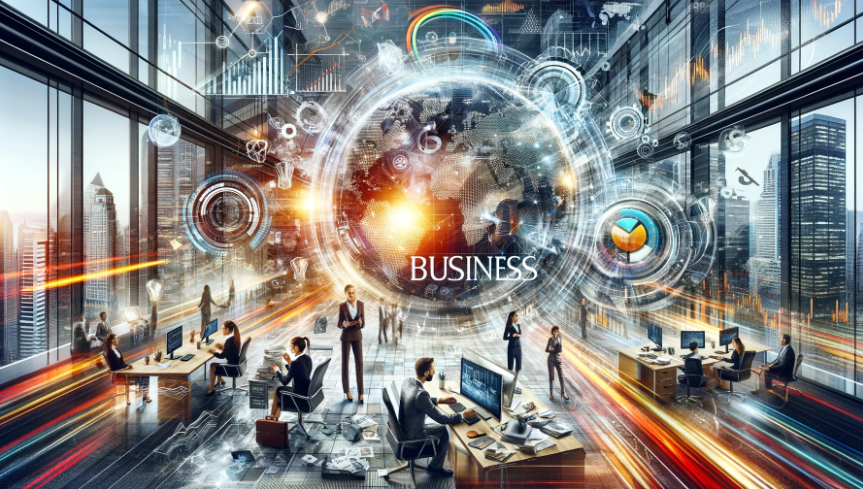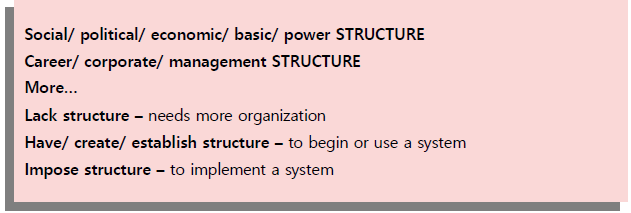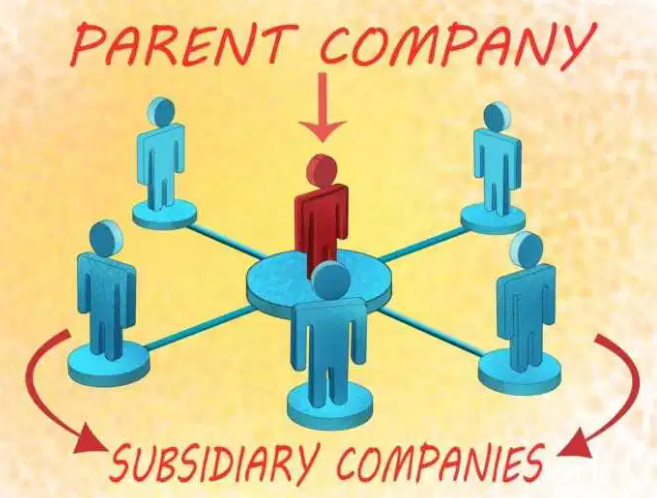Directions: In this part of the test, you will show how well
you can write a response to an e-mail. Your
response will be scored on
●the quality and variety of your sentences,
●vocabulary, and
●organization.
You will have 10 minutes to read and answer
each e-mail.
▮ Assignment Overview
Read an email of approximately 25-50 words and compose a reply.
You will read an email displayed on the screen and write a reply according to the instructions given in the question.
The email will include tasks such as ‘ask a question,’ ‘provide information,’ ‘make a suggestion,’ etc., with three tasks instructed. Your reply must contain responses to all three instructed tasks.
※In the actual exam, two questions will be presented, and you must compose an email for each within 10 minutes.
Directions: Read the e-mail below.
Lesson 1.
FROM: Manager of Greenfield Business Park
TO: All Employees
SUBJECT: Office Renovation Update
SENT: July 15
We are excited to announce that the office renovation will commence next month, starting August 5th. The work will primarily focus on the main lobby and the first floor. Please be prepared for minor disruptions and noise during office hours. We appreciate your patience and cooperation during this time.
Directions: Respond to the e-mail as an employee of Greenfield Business Park. In your reply, make ONE request and ONE question.
Sample Reply Email
Thank you for the update on the upcoming office renovations. Since I work in the area directly adjacent to the lobby, I’m concerned about the noise level. Could arrangements be made for temporary relocation to a quieter area within the building for those of us who have noise-sensitive tasks? Additionally, I am curious to know whether the renovation will affect access to the main conference room during office hours, as I have several important meetings scheduled in August. Your guidance on this would be greatly appreciated.
=====================================================
Lesson 2.
FROM: Head of Sales
TO: Sales Team
SUBJECT: Quarterly Sales Review Meeting
SENT: August 22
I’d like to remind everyone about our quarterly sales review meeting scheduled for September 1st at 10 AM. It’s essential that all team members attend as we will analyze last quarter’s performance, discuss targets for the upcoming quarter, and address any challenges faced. Please come prepared with your reports and insights.
Directions: Respond to the e-mail as a member of the sales team. In your reply, make ONE request and ONE question.
Sample Reply Email
Thank you for the reminder about our quarterly review. I have prepared my report, but I’m seeking some additional data on regional sales trends to provide a more comprehensive analysis. Could this information be made available before the meeting? Also, will there be a discussion on potential strategies to improve underperforming areas, as my region faced several challenges last quarter? Your guidance on these matters would be very helpful for my preparation.
============================================================
Lesson 3.
FROM: Customer Service Manager
TO: All Customer Service Representatives
SUBJECT: New Training Program Introduction
SENT: May 18
We are excited to introduce a new training program focused on advanced communication skills, starting June 3rd. The program includes interactive workshops and role-playing sessions, designed to enhance our service quality. Participation is mandatory for all team members, and a schedule will be shared soon.
Directions: Respond to the e-mail as a customer service representative. In your reply, make ONE request and ONE question.
Sample Reply Email
Thank you for introducing the new training program. I’m looking forward to participating and improving my skills. Could I request a copy of the detailed program itinerary in advance? This would help me prepare better for the sessions. Also, will there be any assessment or certification upon completion of the training? Knowing the evaluation criteria and potential recognition would be motivating and beneficial for our professional development. Your response is much appreciated.
==========================================================
Lesson 4.
FROM: Operations Manager
TO: All Department Leaders
SUBJECT: Office Relocation Update
SENT: November 4
We’re nearing the final stages of our office relocation plan. A detailed move schedule will be shared next week. It’s vital that each department begins preparing their files and equipment for the move, scheduled for December 1st. Please prioritize this in your upcoming department meetings.
Directions: Respond to the e-mail as a department leader. In your reply, make ONE request and ONE question.
Sample Reply Email
Thank you for the update on our office relocation. To ensure a smooth transition, could we receive a checklist or guidelines on how to prepare our department’s files and equipment? Additionally, will there be assistance available for handling and transporting heavy equipment and sensitive materials? Knowing the level of support provided would help us plan effectively and address any concerns within the department ahead of the move. Your guidance is appreciated.
========================================================
Lesson 5.
FROM: Head of IT Department
TO: All Staff
SUBJECT: System Upgrade Notification
SENT: April 10
Please note that a major system upgrade is scheduled for next weekend, April 18-19. All company systems will be offline during this period. Ensure you save all necessary documents offline to avoid any work disruptions.
Directions: Respond to the e-mail as a staff member. In your reply, make ONE request and ONE question.
Sample Reply Email
Thank you for the information regarding the upcoming system upgrade. As I am currently working on a time-sensitive project, I am concerned about the downtime. Is it possible to access the system remotely for urgent tasks during the upgrade period? Also, could you please confirm if the system will be fully operational by the start of the workday on Monday, April 20th? I need to plan my workload accordingly. Your prompt response would be much appreciated.
==========================================================
Lesson 6.
FROM: Facilities Manager
TO: All Employees
SUBJECT: Parking Lot Maintenance
SENT: August 1
Please be informed that the parking lot will be undergoing maintenance from August 10th to 15th. Alternative parking will be provided at the nearby Green Park area. Shuttle service to the office will be available.
Directions: Respond to the e-mail as an employee. In your reply, make ONE request and ONE question.
Sample Reply Email
Thank you for the update on the parking lot maintenance. As I have mobility issues, the additional distance to the shuttle service is a concern. Could special parking arrangements be made closer to the office for employees with disabilities during this period? Also, I would like to know the shuttle service’s operating hours to plan my commute. Your assistance in ensuring accessibility during this time is greatly appreciated.
=======================================================
Lesson 7.
FROM: Human Resources Manager
TO: All Staff
SUBJECT: Annual Health Checkups
SENT: September 5
We are pleased to announce free annual health checkups for all employees on October 3rd. Please sign up by September 20th to secure your appointment. Participation is highly encouraged for your wellbeing.
Directions: Respond to the e-mail as a staff member. In your reply, make ONE request and ONE question.
Sample Reply Email
Thank you for organizing the annual health checkups. Due to a prior engagement, I am unable to attend on October 3rd. Is it possible to schedule my checkup on a different date? Additionally, I would like to know if these checkups include eye and dental examinations. It would be helpful to understand the extent of the services provided. Your guidance on these matters would be greatly appreciated.
============================================================
Lesson 8.
FROM: Office Administration
TO: All Employees
SUBJECT: Fire Drill Announcement
SENT: February 12
A mandatory fire drill will be conducted on February 25th at 11 AM. This drill is essential for ensuring workplace safety. Your full participation is required. Please prepare accordingly.
Directions: Respond to the e-mail as an employee. In your reply, make ONE request and ONE question.
Sample Reply Email
Thank you for informing us about the upcoming fire drill. I have a meeting scheduled at that time with external clients. Is it possible to receive a brief exemption or reschedule the meeting due to the drill? Also, could you provide information on the expected duration of the drill so I can inform the clients and rearrange our agenda if necessary? Your assistance in this matter would be greatly appreciated for maintaining professional commitments.
=============================================================
Lesson 9.
FROM: Training Coordinator
TO: All New Hires
SUBJECT: Orientation Session
SENT: June 14
Welcome to the team! Please remember to attend the mandatory orientation session on June 21st at 9 AM in Conference Room B. The session will cover essential company policies and procedures.
Directions: Respond to the e-mail as a new hire. In your reply, make ONE request and ONE question.
Sample Reply Email
Thank you for the warm welcome and the details about the orientation session. Due to a prior commitment, I may be a few minutes late. Is there a possibility to catch up on any information I might miss at the beginning? Also, could you please let me know if there are any specific documents or materials I should bring along to the session? Your guidance would help me prepare better for my first day. Looking forward to joining the team!
==================================================
Lesson 10.
FROM: Project Manager
TO: Team Members
SUBJECT: Project Deadline Reminder
SENT: March 18
This is a reminder that the deadline for our current project is March 31st. Please ensure all your tasks are completed and submitted by this date for final review.
Directions: Respond to the e-mail as a team member. In your reply, make ONE request and ONE question.
Sample Reply Email
Thank you for the deadline reminder. I’m on track with my tasks but may need some additional data from the research team to finalize my part. Could this be arranged? Also, I was wondering if there will be a meeting before the deadline to discuss the project’s overall progress and address any potential issues. Such a meeting could be beneficial for the team to ensure we’re aligned and on track. Your confirmation on this would be appreciated.
=====================================================
Lesson 11.
FROM: Catering Manager
TO: All Staff
SUBJECT: Office Luncheon
SENT: April 4
We are organizing an office luncheon on April 20th to celebrate our company’s anniversary. Please RSVP by April 10th and mention any dietary restrictions.
Directions: Respond to the e-mail as a staff member. In your reply, make ONE request and ONE question.
Sample Reply Email
Thank you for arranging the office luncheon to celebrate our anniversary. I would like to RSVP for the event and request a vegetarian option, as I have dietary restrictions. Additionally, could you please provide more details about the luncheon’s location and duration? Knowing the schedule will help me manage my work commitments on that day. Looking forward to the celebration and your response.
====================================================
Lesson 12.
FROM: IT Support Team
TO: All Department Heads
SUBJECT: Network Upgrade
SENT: July 15
We will be performing a major network upgrade on July 25th, resulting in intermittent internet outages. Please ensure all critical work is saved offline.
Directions: Respond to the e-mail as a department head. In your reply, make ONE request and ONE question.
Sample Reply Email
Thank you for notifying us about the upcoming network upgrade. As my department relies heavily on internet access for daily operations, could you provide an estimated timeframe for the outages? This would help us in planning our work more effectively. Also, is there a possibility of arranging temporary alternative internet solutions for departments with critical online tasks during the upgrade period? Your assistance in minimizing the impact on our productivity would be greatly appreciated.
=========================================================
Lesson 13.
FROM: Marketing Director
TO: Marketing Team Members
SUBJECT: Upcoming Product Launch Meeting
SENT: October 5
Reminder: We’re holding a detailed meeting about the upcoming product launch on October 12th at 2 PM in the main conference room. Attendance is crucial as we’ll discuss marketing strategies and assign roles. Please review the preliminary plan sent earlier and come prepared with ideas and feedback.
Directions: Respond to the e-mail as a member of the marketing team. In your reply, make ONE request and ONE question.
Sample Reply Email
Thank you for the reminder about the product launch meeting. I’ve reviewed the preliminary plan and have some suggestions regarding digital marketing strategies. Could we allocate time during the meeting for a brief presentation of these ideas? Also, will there be representatives from other departments attending to provide their insights, especially from product development? Understanding their perspectives could enhance our marketing approaches. Your confirmation on these points would be very helpful.
===============================================
Lesson 14.
FROM: Wellness Committee Chair
TO: All Employees
SUBJECT: Health and Wellness Week
SENT: February 20
Next week is our annual Health and Wellness Week. There will be a variety of activities including yoga sessions, nutrition workshops, and stress management seminars. Please check the full schedule on the intranet and sign up for the sessions of your interest.
Directions: Respond to the e-mail as an employee. In your reply, make ONE request and ONE question.
Sample Reply Email
Thank you for organizing Health and Wellness Week. I’m interested in the nutrition workshops but have a conflicting schedule. Is it possible to access recordings or materials from these sessions afterward? Also, are there any specific sessions focused on dietary advice for those with food allergies? It would be great to have tailored information available. Your response and the effort to promote our wellbeing are much appreciated.
==================================================
Lesson 15.
FROM: Chief Technology Officer
TO: All IT Staff
SUBJECT: Cybersecurity Training Session
SENT: October 10
We are conducting a mandatory cybersecurity training session on October 20th. This session will cover new protocols and threat prevention techniques. Your attendance is essential to ensure our network remains secure. Please confirm your attendance by October 15th.
Directions: Respond to the e-mail as an IT staff member. In your reply, make ONE request and ONE question.
Sample Reply Email
Thank you for organizing the cybersecurity training session. Due to a prior commitment, I might be late for the session. Could the key points or a recording be made available for those who can’t attend the entire session? Also, will this training include hands-on exercises to practice the new protocols? I believe practical experience would be very beneficial for our team’s understanding and preparedness. Your consideration is appreciated.
=============================================================
Lesson 16.
FROM: HR Director
TO: All Employees
SUBJECT: Upcoming Health and Safety Training
SENT: September 5
We are conducting mandatory health and safety training on September 15th, focusing on emergency response and workplace safety protocols. Attendance is crucial. If you have prior commitments, please inform HR to arrange an alternative session. Stay informed and stay safe!
Directions: Respond to the e-mail as a new employee, unfamiliar with the company’s procedures. In your reply, ask TWO questions about the training and make ONE suggestion regarding accessibility of training materials.
Sample Reply Email
Thank you for the notice about the health and safety training. As a new member of the team, could you please clarify the location and duration of the training session? Also, will there be any online resources or documentation available for review before the training? In addition, I suggest providing a digital version of the training materials post-session for future reference and for those who may need to attend an alternate session. This could enhance our understanding and retention of the crucial information shared.
Sincerely,
======================================================
Lesson 17.
FROM: Facilities Manager
TO: All Staff
SUBJECT: Cafeteria Renovation
SENT: March 10
We are excited to announce that our cafeteria will undergo a renovation starting March 20th. During this period, the cafeteria will be closed. Alternative dining options will be provided in the adjacent building. We appreciate your understanding and cooperation during these improvements.
Directions: Respond to the e-mail as a staff member. In your reply, ask TWO questions about the alternative dining options and make ONE suggestion to enhance staff convenience during the renovation period.
Sample Reply Email
Thank you for the update on the cafeteria renovation. Could you please provide more details about the alternative dining options, such as the types of food available and the operating hours? Also, is there a seating arrangement or reservation system in place at the temporary location to manage the expected increase in crowd? As a suggestion, perhaps a temporary food truck could be arranged in our parking lot to offer additional variety and convenience during the renovation period. This could help in managing the lunchtime rush more effectively.
Sincerely,
===========================================================
Lesson 18.
FROM: IT Department Head
TO: All Employees
SUBJECT: Upcoming Software Update
SENT: May 2
Our company will be undergoing a significant software update next week. This will require all computers to be offline for approximately two hours on May 10th, starting at 3 PM. Please ensure all your work is saved before this time.
Directions: Respond to the e-mail as an employee. In your reply, ask TWO questions about the software update and make ONE suggestion for minimizing work disruption.
Sample Reply Email
Thank you for informing us about the upcoming software update. Could you please specify which software applications will be updated, and whether this will affect access to our email and file-sharing services during the offline period? Also, will there be any new features or changes we should be aware of post-update? As a suggestion, it might be beneficial to have IT support available after the update to assist with any potential issues or questions about the new software functionalities.
Sincerely,
==============================================================
Lesson 19.
FROM: Corporate Communications Team
TO: All Staff
SUBJECT: Employee Satisfaction Survey
SENT: July 8
We’re conducting an employee satisfaction survey to better understand your experiences and identify areas for improvement. The survey is anonymous and takes approximately 10 minutes to complete. Please submit your responses by July 20th. Your feedback is vital for our continued growth.
Directions: Respond to the e-mail as an employee. In your reply, ask TWO questions about the survey and make ONE suggestion to encourage participation.
Sample Reply Email
Thank you for initiating the employee satisfaction survey. Could you please clarify if the survey results will be shared with the staff, and if so, in what format? Additionally, are there specific areas of focus in the survey, such as work-life balance or job satisfaction? As a suggestion, to encourage widespread participation, perhaps the company could consider offering an incentive, like a raffle entry for a small prize, for those who complete the survey. This might increase engagement and ensure a more comprehensive set of responses.
Best regards,
==============================================================
Lesson 20.
FROM: Project Manager
TO: Project Team
SUBJECT: Deadline Extension Request
SENT: September 18
Due to unexpected challenges, we are requesting a one-week extension for the project deadline. Please provide your input and feasibility assessment by September 22nd, and we will collectively decide on the new deadline.
Directions: Respond to the e-mail as a project team member. In your reply, make ONE request for additional information and ONE suggestion for managing the extended timeline.
Sample Reply Email
Thank you for the update regarding the project deadline extension request. To assess the feasibility of the extension, could you please provide details on the specific challenges faced by the team? Additionally, considering the extended timeline, it might be beneficial to have a brief team meeting to reassign tasks and ensure everyone is on the same page regarding the revised project schedule. This could help in maintaining project efficiency during the extension.
Best regards,
========================================================
Lesson 21.
FROM: HR Manager
TO: All Employees
SUBJECT: Upcoming Company Picnic
SENT: June 10
Our annual company picnic is scheduled for June 25th at the Green Park. We’ll have food, games, and team-building activities. Please RSVP by June 18th, and let us know if you have any dietary preferences or restrictions.
Directions: Respond to the e-mail as an employee. In your reply, ask TWO questions about the picnic arrangements and make ONE suggestion to enhance the picnic experience.
Sample Reply Email
Thank you for the invitation to the company picnic. Could you please provide more details about the schedule of events and any specific games or activities planned for the day? Additionally, considering the current situation, would there be any safety measures in place to ensure everyone’s well-being during the event? As a suggestion, it might be fun to organize a “talent show” or a “potluck dish” contest to make the picnic even more enjoyable and interactive.
Looking forward to it!
============================================================
Lesson 22.
Sample E-mail
FROM: Marketing Manager
TO: Marketing Team
SUBJECT: Upcoming Product Launch
SENT: October 5
Our new product launch is set for October 20th. Please ensure all marketing materials are ready, and we’ll have a team meeting on October 15th to go over the final preparations. Your creativity and dedication are greatly appreciated.
Directions: Respond to the e-mail as a marketing team member. In your reply, ask ONE question about the product launch details and make ONE suggestion for promoting the new product.
Sample Reply Email
Thank you for the update on the product launch. Could you please provide more details about the launch event itself, such as the venue and the target audience? Additionally, to promote the new product effectively, we might consider collaborating with social media influencers in our industry. This could help us reach a wider and more engaged audience.
Excited for the launch!
=========================================================
Lesson 23.
FROM: Project Coordinator
TO: Project Team Members
SUBJECT: Client Meeting Preparation
SENT: December 3
We have an important client meeting scheduled for December 15th. Please ensure that all necessary documents and presentations are ready for review by December 10th. We need to make a strong impression.
Directions: Respond to the e-mail as a project team member. In your reply, ask ONE question about the client meeting and make ONE suggestion for a successful presentation.
Sample Reply Email
Thank you for the heads-up about the client meeting. Could you provide more details about the agenda and the specific client expectations for this meeting? Additionally, to ensure a successful presentation, it might be beneficial to conduct a dry run or rehearsal of the presentation as a team. This could help us identify and resolve any potential issues or gaps in our presentation.
Looking forward to it!
===============================================================
Lesson 24.
FROM: HR Manager
TO: All Employees
SUBJECT: Holiday Office Closure
SENT: November 25
Our office will be closed from December 24th to January 2nd for the holiday season. Please ensure all pending work is completed before the closure, and make any necessary arrangements for remote access if required.
Directions: Respond to the e-mail as an employee. In your reply, ask ONE question about holiday procedures and make ONE suggestion for team coordination during the office closure.
Sample Reply Email
Thank you for the notice about the holiday office closure. Could you please clarify the process for submitting leave requests during this period, especially for employees who need to work remotely? Additionally, it might be helpful to set up a shared online document where team members can update their project statuses and leave information. This could streamline communication and ensure a smooth workflow even during the closure.
Best regards,
===========================================================
Lesson 25.
FROM: Sales Manager
TO: Sales Team
SUBJECT: Upcoming Sales Presentation
SENT: February 12
Our next sales presentation is scheduled for February 25th. Please start preparing your pitches and presentations. We’ll have a team meeting on February 20th to discuss the details and practice our pitches.
Directions: Respond to the e-mail as a sales team member. In your reply, ask ONE question about the presentation logistics and make ONE suggestion to ensure a successful presentation.
Sample Reply Email
Thank you for the update on the sales presentation. Could you provide more information about the venue and the expected audience for this presentation? Additionally, to enhance our presentations, we might consider conducting peer reviews within the team. This would allow us to provide constructive feedback and refine our pitches for maximum impact.
Looking forward to it!
=========================================================
Lesson 26.
FROM: Project Coordinator
TO: Project Team Members
SUBJECT: Project Update and Next Steps
SENT: April 15
We’ve made good progress on our project, and the next phase begins on May 1st. Please review the project timeline and be prepared for a team meeting on April 28th to discuss the upcoming tasks and responsibilities.
Directions: Respond to the e-mail as a project team member. In your reply, ask ONE question about the project timeline and make ONE suggestion to ensure smooth collaboration in the next phase.
Sample Reply Email
Thank you for the project update. Could you provide more details about the specific objectives and milestones for the next phase starting on May 1st? Additionally, to facilitate collaboration, it might be beneficial to set up a shared project dashboard or task board where team members can track progress and updates in real-time. This could improve transparency and communication within the team.
Best regards,
=========================================================
Lesson 27.
FROM: Marketing Manager
TO: Marketing Team
SUBJECT: Marketing Campaign Launch
SENT: July 5
Our new marketing campaign is set to launch on July 20th. Please double-check all marketing materials and ensure they are error-free. We want to make a strong impression with this campaign.
Directions: Respond to the e-mail as a marketing team member. In your reply, ask ONE question about the campaign launch details and make ONE suggestion for maximizing the campaign’s impact.
Sample Reply Email
Thank you for the update on the marketing campaign launch. Could you provide more information about the target audience and the key channels through which the campaign will be promoted? Additionally, to maximize impact, we might consider conducting a final review session as a team to catch any potential issues and ensure all elements of the campaign align with our objectives.
Excited for the launch!
=========================================================
Lesson 28.
FROM: HR Manager
TO: All Employees
SUBJECT: Employee Feedback Survey
SENT: September 10
We value your feedback! Please participate in our annual employee feedback survey, which will be open from September 20th to September 30th. Your input is essential in helping us make improvements. Watch for the survey link in your inbox.
Directions: Respond to the e-mail as an employee. In your reply, ask ONE question about the survey process and make ONE suggestion to encourage participation.
Sample Reply Email
Thank you for initiating the employee feedback survey. Could you provide more details about the confidentiality of our responses and how the survey results will be used? Additionally, to encourage participation, it might be helpful to send out reminders and offer small incentives, such as a gift card raffle, for completing the survey. This could motivate more employees to participate and provide valuable feedback.
Best regards,
===========================================================
Lesson 29.
FROM: IT Department Head
TO: All Employees
SUBJECT: Scheduled Server Maintenance
SENT: December 15
We will be performing scheduled maintenance on our servers on December 28th, from 9 PM to 3 AM. During this time, there may be temporary disruptions in network access and email services. We apologize for any inconvenience.
Directions: Respond to the e-mail as an employee. In your reply, ask ONE question about the server maintenance and make ONE suggestion to minimize disruptions.
Sample Reply Email
Thank you for notifying us about the server maintenance. Could you provide more details about the nature of the maintenance and the expected duration of any potential disruptions? Additionally, to minimize disruptions, it might be helpful to schedule this maintenance during non-business hours or on a weekend to ensure minimal impact on our daily work.
Best regards,
==========================================================
Lesson 30.
FROM: Sales Manager
TO: Sales Team
SUBJECT: Quarterly Sales Meeting
SENT: March 8
Our quarterly sales meeting is scheduled for March 20th. Please ensure all your sales reports are up-to-date and ready for presentation. We’ll have a team briefing on March 15th to prepare for the meeting.
Directions: Respond to the e-mail as a sales team member. In your reply, ask ONE question about the meeting agenda and make ONE suggestion for an effective presentation.
Sample Reply Email
Thank you for the notification about the quarterly sales meeting. Could you provide more details about the agenda and any specific areas of focus for this meeting? Additionally, for effective presentations, it might be beneficial to have a brief practice session within the team to receive feedback and ensure everyone is aligned in delivering key points during the meeting.
Looking forward to it!
=================================================================
Lesson 31.
FROM: Postville Public Library
TO: All members
SUBJECT: Tryouts for a new play
SENT: September 14
The Postville Players will perform “Gate 34,” an original play written and directed by member Mary Wilson, the evenings of November 13 and 14 and the afternoon of November 15. Tryouts for the play will be held on Saturday afternoon, September 19, from 2:00 to 4:00 p.m. The play calls for five actors and seven actresses. Also, a chorus of 10 to 12 people and five or six backstage personnel are also needed. Rehearsals will be held weekday evenings.
Directions: Respond to the e-mail as someone who wants to appear in “Gate 34” or work backstage. Ask ONE question about the play and ONE about the rehearsals.
Sample Reply Email
Thank you for the e-mail. I am thrilled about the opportunity to be part of “Gate 34.” Can you provide more details about the character requirements for the play? I’m particularly interested in understanding the roles for actors. Additionally, for those interested in backstage work, could you clarify the rehearsal schedule and the specific tasks involved? Looking forward to getting involved!
=============================================================
Lesson 32.
FROM: Marketing Manager
TO: All Employees
SUBJECT: Charity Run Participation
SENT: October 5
Our company will be participating in the annual Charity Run on November 15th. We encourage employees to join and contribute to a good cause. Registration details and team formation will be shared soon.
Directions: Respond to the e-mail as an employee interested in participating in the Charity Run. Ask ONE question about the event and make ONE suggestion for team formation.
Sample Reply Email
Thank you for the announcement about the Charity Run. Could you please provide more information about the registration process and the route for the run? Additionally, for team formation, it might be a good idea to create teams based on departments or interests to encourage participation and friendly competition.
Looking forward to it!
===============================================================
Lesson 33.
FROM: Susan Chen, Community Outreach Coordinator
TO: Alumni of Greenfield College
SUBJECT: Annual Career Sharing Day
SENT: February 15
Dear Greenfield College Alumni,
We are excited to invite you to our Annual Career Sharing Day, scheduled for 10:00 a.m. to 12:00 p.m. on Saturday, March 20th, at the college auditorium. This event allows alumni to share their career experiences and insights with our current students. Each participant will give a ten-minute talk about their career journey, followed by a Q&A session. Your stories can significantly impact our students’ career choices and aspirations. We look forward to your participation.
Best regards,
Susan Chen
Directions: In your response, mention your occupation and brief job history. Also, make ONE request for additional information or clarification.
Sample Reply E-mail
Dear Ms. Chen,
I am honored to receive the invitation for the Annual Career Sharing Day. After graduating from Greenfield College, I pursued a career in digital marketing. Currently, I am the Marketing Director at Tech Innovations, where I’ve been for the past six years. My journey has been filled with both challenges and triumphs. In my talk, I plan to focus on the evolving nature of digital marketing and its impact. Could you please let me know if there are any specific areas or topics the students are particularly interested in? I want to ensure my presentation is as relevant and engaging as possible.
Thank you for considering me for this opportunity.
Warm regards,
================================================
Lesson 34.
FROM: Laura Smith, Director of Innovation
TO: Research and Development Team
SUBJECT: Innovation Week Presentations
SENT: April 1
Dear Team,
We’re launching an “Innovation Week” from April 25 to April 29. It’s an opportunity for team members to showcase their current projects and innovative ideas. We encourage you to present your work. Please let us know if you’re interested in participating and what project you would like to present.
Best,
Laura Smith
Directions: In your response, express your interest (or lack thereof) in the initiative, provide a brief overview of your current project or work, and ask a question related to the initiative.
Sample Reply E-mail
Dear Ms. Smith,
Thank you for organizing Innovation Week. I am interested in participating and would like to present my project on developing eco-friendly packaging solutions. This project aligns with our company’s sustainability goals. Could you please provide more information on the presentation format and time allocation for each participant?
Looking forward to the event.
Kind regards,
=====================================================
Lesson 35.
FROM: Emily Johnson, Project Manager
TO: Project Team Members
SUBJECT: Project Deadline Reminder
SENT: June 5
Team,
As a reminder, the deadline for the Phoenix Project is set for July 15. This timeline is crucial for our next phase. Please assess your current progress and let me know immediately if you foresee any challenges in meeting this deadline. Your prompt response is appreciated.
Regards,
Emily Johnson
Directions: In your response, mention whether you can meet the proposed deadline, explain briefly any challenges you foresee in meeting it, and request any additional resources or support you might need.
Sample Reply E-mail
Dear Ms. Johnson,
Thank you for the reminder. I am confident about meeting the July 15 deadline for the Phoenix Project. However, the current pace might be impacted by the pending client feedback on our latest submission. Could we expedite their response? Timely feedback is essential for maintaining our schedule.
Best regards,
==============================================
Lesson 36
FROM: Thomas Green, Head of Marketing
TO: Marketing Department Staff
SUBJECT: Monthly Strategy Meeting
SENT: August 10
Dear Team,
Please save the date for our monthly strategy meeting on August 25 at 3:00 PM in the main conference room. This meeting is vital for discussing our Q4 marketing strategy. Let us know if you can attend and suggest any additional topics for the agenda.
Regards,
Thomas Green
Directions: In your reply, confirm your availability for the meeting, suggest one topic you think should be included in the agenda, and ask a specific question about the meeting’s arrangements.
Dear Mr. Green,
Thank you for organizing the monthly strategy meeting. I will be present on August 25. I propose we include a segment on customer feedback analysis in our Q4 strategy discussion. This could provide valuable insights for our marketing approach. Additionally, could you please confirm if any pre-meeting materials will be circulated? Having access to these documents in advance would greatly facilitate a more productive discussion.
Best regards,
=================================================
Lesson 37
From: Mark Borthwick
To: Simon Brown
Subject: Sales report deadlines
Sent: February 8, 8:59 A.M.
Dear Simon,
The accounting department has recently informed me that your sales reports have consistently been submitted after the deadlines. Please respond to this email with reasons as to why you have failed to meet the deadlines.
Regards,
Mark Borthwick
Regional Manager
Directions: In your email, provide TWO reasons for the issue mentioned and make ONE request.
Sample Reply E-mail
Dear Mark,
I apologize for the delay in submitting the sales reports. The primary reason has been a significant increase in client inquiries this quarter, which required immediate attention and consumed much of my time. Additionally, the new sales tracking software has had several technical issues, causing delays in data compilation. To resolve this, may I request additional training for my team on the new software? This would greatly assist us in meeting future deadlines.
Best regards,
Simon Brown
======================================================
Lesson 38
From: Jane Dawson
To: Alex Martinez
Subject: Urgent Need for Project Update
Sent: July 15, 9:30 A.M.
Dear Alex,
I’ve noticed that there hasn’t been any update on the “Green Energy” project for the past two weeks. This is concerning as the project’s deadline is approaching. Could you please explain the reasons for this delay?
Best regards,
Jane Dawson
Project Coordinator
Directions: In your email, acknowledge the request, provide TWO reasons for the current situation, and suggest ONE possible solution.
Sample Reply E-mail
Dear Jane,
Thank you for reaching out regarding the “Green Energy” project. The delay is partly due to unforeseen regulatory compliance issues, which required additional research and consultation. Also, we encountered some technical challenges with the prototype that needed resolution. To expedite progress, I propose organizing a joint meeting with our compliance and technical teams next week to align our strategies and ensure we meet the deadline.
Best regards,
Alex Martinez
===========================================================
Lesson 39
From: Lisa Nguyen
To: Department Heads
Subject: Quarterly Planning Meeting
Sent: March 3, 10:00 A.M.
Dear Department Heads,
Please be reminded of our upcoming quarterly planning meeting scheduled for March 10 at 2:00 PM in the main conference hall. We will discuss our strategies and goals for the next quarter. Let me know if you have specific topics to add to the agenda.
Best regards,
Lisa Nguyen
Chief Operations Officer
Directions: In your reply, confirm your attendance, mention one specific topic you would like to discuss, and ask a question regarding the meeting logistics.
Sample Reply E-mail
Dear Lisa,
I appreciate the reminder about the quarterly planning meeting on March 10. I confirm my attendance and would like to propose adding our department’s digital transformation strategy to the agenda. This topic is crucial for our upcoming projects. Additionally, can you please inform if there will be any specific preparation required from us prior to the meeting, such as data or reports to be shared?
Best regards,
================================================
Lesson 40
From: Emily Roberts
To: All Staff
Subject: Printer Malfunction in Office
Sent: May 20, 11:30 A.M.
Dear Team,
We’ve noticed recurring issues with the main office printer. It often jams and is causing delays in document processing. We’re looking for suggestions on how to address this problem. Please share your ideas.
Best,
Emily Roberts
Office Manager
Directions: In your reply, acknowledge the issue, offer two potential solutions, and ask for feedback on your suggestions.
Sample Reply E-mail
Dear Emily,
Thank you for addressing the printer issue. One solution could be scheduling regular maintenance checks to prevent future malfunctions. Alternatively, considering the frequent use and importance of printing in our daily operations, investing in a higher-capacity printer might be more cost-effective in the long run. Could we discuss these options in the next team meeting to decide on the best course of action?
Kind regards,
============================================

































